Impact of Corrosion on the Degradation of the Mechanical Properties of 2195 and 2297 Al Alloys in the Marine Environment
Abstract
:1. Introduction
2. Materials and Methods
2.1. Materials
2.2. Exposure Test
2.3. Microstructural and Mechanical Characterization
3. Results and Discussion
3.1. Corrosion Behavior of Specimens
3.2. Mechanical Properties
4. Conclusions
- (1)
- With an increase in the exposure time, the corrosion products on the surface of 2297-T8 gradually accumulate, and the corrosion products on the surface of 2195-T8 accumulate rapidly.
- (2)
- The EDS results show that the corrosion products of 2297 are mainly Al oxides and that those of 2195 are mainly composed of Al, Fe, Mn, Si, etc.
- (3)
- Through the corrosion pit diameter, corrosion pit depth, and corrosion mass reduction rate surface, the trend of the increasing average radius of the corrosion pits and corrosion mass reduction rate surface varies linearly, and the average depth of the corrosion pits increases dramatically after 9 months of exposure time.
- (4)
- According to the mechanical properties of the study surface, in a marine atmosphere, the degradation of 2297-T8’s ductility is higher than that of 2195-T8, while the degradation of the yield stress is lower than that of 2195-T8.
Author Contributions
Funding
Data Availability Statement
Conflicts of Interest
References
- Tsivoulas, D.; Robson, J.D.; Sigli, C.; Prangnell, P.B. Interactions between zirconium and manganese dispersoid-forming elements on their combined addition in Al–Cu–Li alloys. Acta Mater. 2012, 60, 5245–5259. [Google Scholar] [CrossRef]
- Elkhodary, K.I.; Zikry, M.A. Dynamic crack nucleation and propagation in polycrystalline aluminum aggregates subjected to large inelastic deformations. Int. J. Fract. 2012, 175, 95–108. [Google Scholar] [CrossRef]
- Starke, E.A., Jr. Historical Development and Present Status of Aluminum–Lithium Alloys. In Aluminum-Lithium Alloys; Elsevier: Amsterdam, The Netherlands, 2014; pp. 3–26. [Google Scholar]
- Rioja, R.J.; Liu, J. The Evolution of Al-Li Base Products for Aerospace and Space Applications. Metall. Mater. Trans. A 2012, 43, 3325–3337. [Google Scholar] [CrossRef]
- Abd El-Aty, A.; Xu, Y.; Guo, X.; Zhang, S.H.; Ma, Y.; Chen, D. Strengthening mechanisms, deformation behavior, and anisotropic mechanical properties of Al-Li alloys: A review. J. Adv. Res. 2018, 10, 49–67. [Google Scholar] [CrossRef] [PubMed]
- Vijaya Kumar, P.; Madhusudhan Reddy, G.; Srinivasa Rao, K. Microstructure and pitting corrosion of armor grade AA7075 aluminum alloy friction stir weld nugget zone—Effect of post weld heat treatment and addition of boron carbide. Def. Technol. 2015, 11, 166–173. [Google Scholar] [CrossRef]
- Sun, Y.J.; Yang, R.; Xie, L.; Li, Y.B.; Wang, S.L.; Li, H.X.; Wang, W.R.; Zhang, J.S. Interfacial bonding and corrosion behaviors of HVOF-sprayed Fe-based amorphous coating on 8090 Al-Li alloy. Surf. Coat. Technol. 2022, 436, 128316. [Google Scholar] [CrossRef]
- LeBozec, N.; Thierry, D.; Persson, D.; Riener, C.K.; Luckeneder, G. Influence of microstructure of zinc-aluminium-magnesium alloy coated steel on the corrosion behavior in outdoor marine atmosphere. Surf. Coat. Technol. 2019, 374, 897–909. [Google Scholar] [CrossRef]
- Ji, Y.-Y.; Xu, Y.-Z.; Zhang, B.-B.; Behnamian, Y.; Xia, D.-H.; Hu, W.-B. Review of micro-scale and atomic-scale corrosion mechanisms of second phases in aluminum alloys. Trans. Nonferrous Met. Soc. China 2021, 31, 3205–3227. [Google Scholar] [CrossRef]
- Liu, D.-J.; Tian, G.; Jin, G.-F.; Zhang, W.; Zhang, Y.-H. Characterization of localized corrosion pathways in 2195-T8 Al–Li alloys exposed to acidic solution. Def. Technol. 2022; in press. [Google Scholar] [CrossRef]
- Chen, W.; Zhang, W.; Ding, D.; Xiao, D. Microstructure of Al-5Cu-1Li-0.6Mg-0.5Ag-0.5Mn Alloys. Metals 2020, 11, 37. [Google Scholar] [CrossRef]
- Boag, A.; Taylor, R.J.; Muster, T.H.; Goodman, N.; McCulloch, D.; Ryan, C.; Rout, B.; Jamieson, D.; Hughes, A.E. Stable pit formation on AA2024-T3 in a NaCl environment. Corros. Sci. 2010, 52, 90–103. [Google Scholar] [CrossRef]
- Chen, G.S.; Gao, M.; Wei, R.P. Microconstituent-Induced Pitting Corrosion in Aluminum Alloy 2024-T3. Corros. Sci. 1996, 52, 8–15. [Google Scholar] [CrossRef]
- Safyari, M.; Moshtaghi, M.; Kuramoto, S. Environmental hydrogen embrittlement associated with decohesion and void formation at soluble coarse particles in a cold-rolled Al–Cu based alloy. Mater. Sci. Eng. A 2021, 799, 139850. [Google Scholar] [CrossRef]
- Safyari, M.; Moshtaghi, M.; Kuramoto, S. On the role of traps in the microstructural control of environmental hydrogen embrittlement of a 7xxx series aluminum alloy. J. Alloys Compd. 2021, 855, 157300. [Google Scholar] [CrossRef]
- Kang, S.J.; Kim, T.-H.; Yang, C.-W.; Lee, J.I.; Park, E.S.; Noh, T.W.; Kim, M. Atomic structure and growth mechanism of T1 precipitate in Al–Cu–Li–Mg–Ag alloy. Scr. Mater. 2015, 109, 68–71. [Google Scholar] [CrossRef]
- Wang, S.; Zhang, C.; Li, X.; Huang, H.; Wang, J. First-principle investigation on the interfacial structure evolution of the δ’/θ’/δ’ composite precipitates in Al-Cu-Li alloys. J. Mater. Sci. Technol. 2020, 58, 205–214. [Google Scholar] [CrossRef]
- Wu, M.; Xiao, D.; Liu, W.; Huang, L. Microstructure, Mechanical Properties, and Corrosion Behavior of Al-4.0Cu-1.1Li-0.5Mg-xAg Alloys. Metals 2022, 12, 374. [Google Scholar] [CrossRef]
- Li, J.F.; Zheng, Z.Q.; Jiang, N.; Li, S.C. Study on localized corrosion mechanism of 2195 Al-Li alloy in 4.0% NaCl solution (pH 6.5) using a three-electrode coupling system. Mater. Corros. 2005, 56, 192–196. [Google Scholar] [CrossRef]
- De Sousa Araujo, J.V.; de Silva, R.M.P.; Donatus, U.; De Souza Carvalho Machado, C.; Costa, I. Microstructural, Electrochemical and Localized Corrosion Characterization of the AA2198-T851 Alloy. Mater. Res. 2020, 23, e20200161. [Google Scholar] [CrossRef]
- Zhang, X.; Zhou, X.; Hashimoto, T.; Liu, B.; Luo, C.; Sun, Z.; Tang, Z.; Lu, F.; Ma, Y. Corrosion behaviour of 2A97-T6 Al-Cu-Li alloy: The influence of non-uniform precipitation. Corros. Sci. 2018, 132, 1–8. [Google Scholar] [CrossRef]
- Safyari, M.; Hojo, T.; Moshtaghi, M. Effect of environmental relative humidity on hydrogen-induced mechanical degradation in an Al–Zn–Mg–Cu alloy. Vacuum 2021, 192, 110489. [Google Scholar] [CrossRef]
- Charalampidou, C.; Dietzel, W.; Zheludkevich, M.; Kourkoulis, S.K.; Alexopoulos, N.D. Corrosion-induced mechanical properties degradation of Al-Cu-Li (2198-T351) aluminium alloy and the role of side-surface cracks. Corros. Sci. 2021, 183, 109330. [Google Scholar] [CrossRef]
- Deng, C.; Wang, C.; Wang, F.; Song, B.; Zhang, H. Effect of microstructure evolution on corrosion behavior of 2195 Al-Li alloy friction stir welding joint. Mater. Charact. 2022, 184, 111652. [Google Scholar] [CrossRef]
- Ghosh, R.; Venugopal, A.; Narayanan, P.R.; Sharma, S.C.; Venkitakrishnan, P.V. Environmentally assisted cracking resistance of Al–Cu–Li alloy AA2195 using slow strain rate test in 3.5% NaCl solution. Trans. Nonferrous Met. Soc. China 2017, 27, 241–249. [Google Scholar] [CrossRef]
- Pazhanivel, B.; Sathiya, P.; Muthuraman, K.; Sozhan, G. Influence of NaCl environment on stress corrosion cracking of additive manufactured Ti-6Al-4V alloy. Eng. Fail. Anal. 2021, 127, 105515. [Google Scholar] [CrossRef]
- Peng, C.; Cao, G.; Gu, T.; Wang, C.; Wang, Z.; Sun, C. The corrosion behavior of the 6061 Al alloy in simulated Nansha marine atmosphere. J. Mater. Res. Technol. 2022, 19, 709–721. [Google Scholar] [CrossRef]
- Zhang, J.; Wang, B.; Tian, Y. Study of pre-strain before artificial aging on mechanical property and stress corrosion behavior of 2297 Al–Cu–Li alloy. Mater. Sci. Eng. A Struct. Mater. Prop. Microstruct. Process. 2022, 831, 142174. [Google Scholar] [CrossRef]
- Zhang, J.; Wang, B.; Yi, D. Stress corrosion cracking behavior in 2297 Al–Cu–Li alloy at different grain orientations. Mater. Sci. Eng. A Struct. Mater. Prop. Microstruct. Process. 2019, 764, 138252. [Google Scholar] [CrossRef]
- Cui, Z.Y.; Li, X.G.; Xiao, K.; Dong, C.F.; Liu, Z.Y.; Zhang, D.W. Atmospheric corrosion behaviour of pure Al 1060 in tropical marine environment. Corros. Eng. Sci. Technol. 2014, 50, 438–448. [Google Scholar] [CrossRef]
- Zhang, S.; Zhang, T.; He, Y.; Liu, D.; Wang, J.; Du, X.; Ma, B. Long-term atmospheric corrosion of aluminum alloy 2024-T4 in coastal environment: Surface and sectional corrosion behavior. J. Alloys Compd. 2019, 789, 460–471. [Google Scholar] [CrossRef]
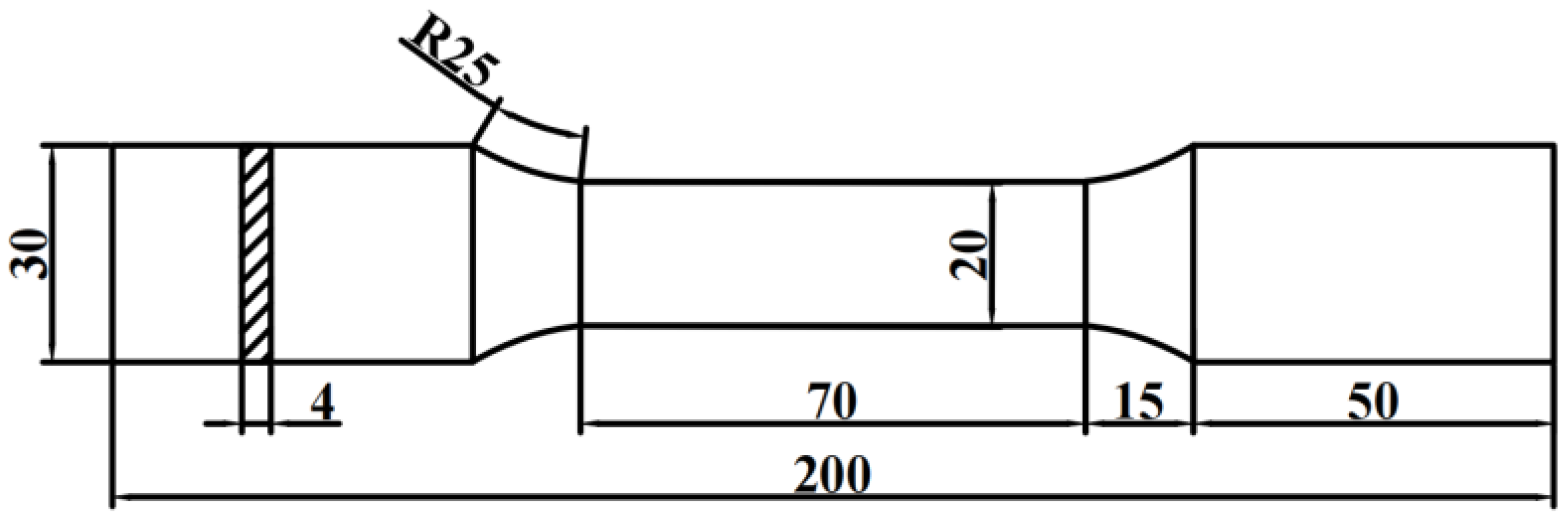
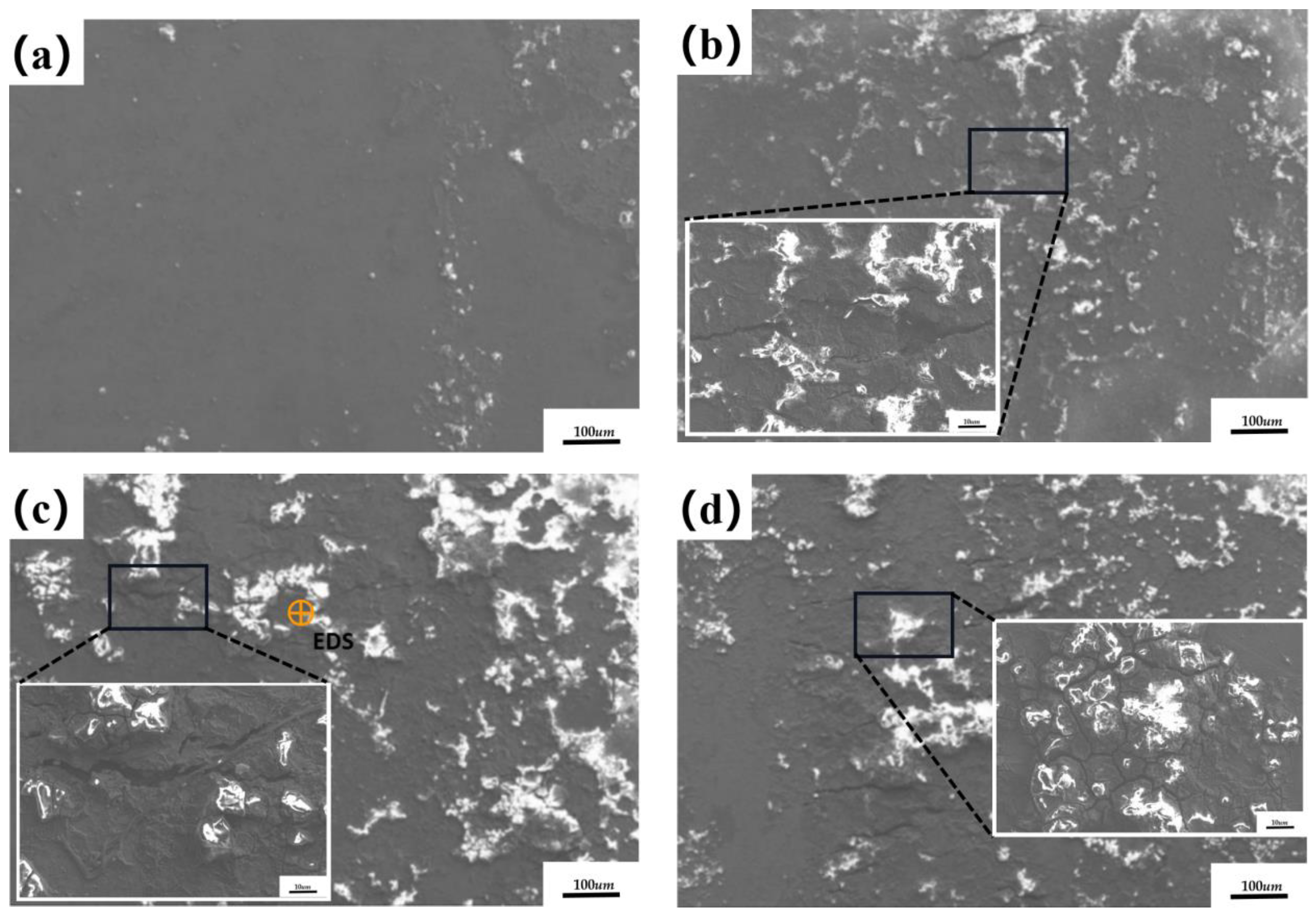

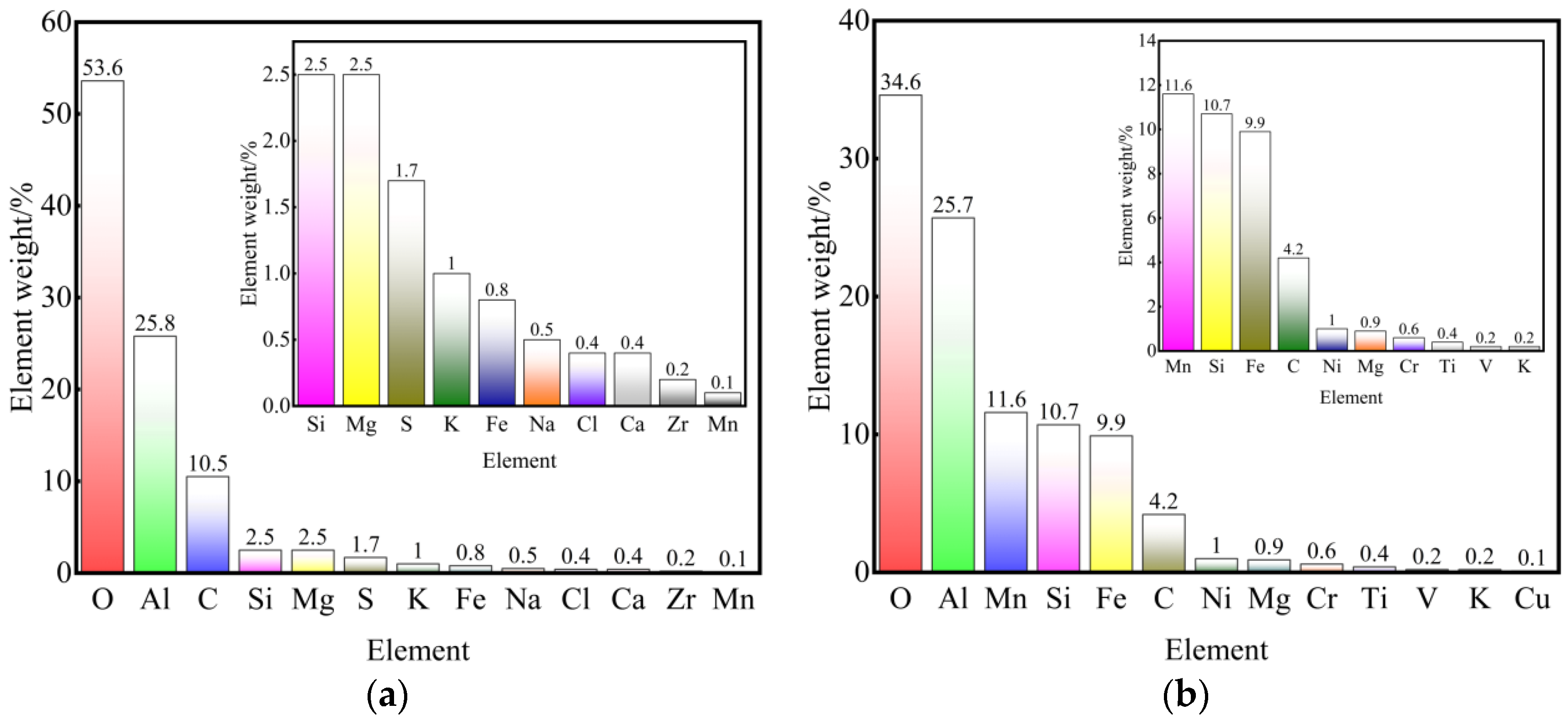


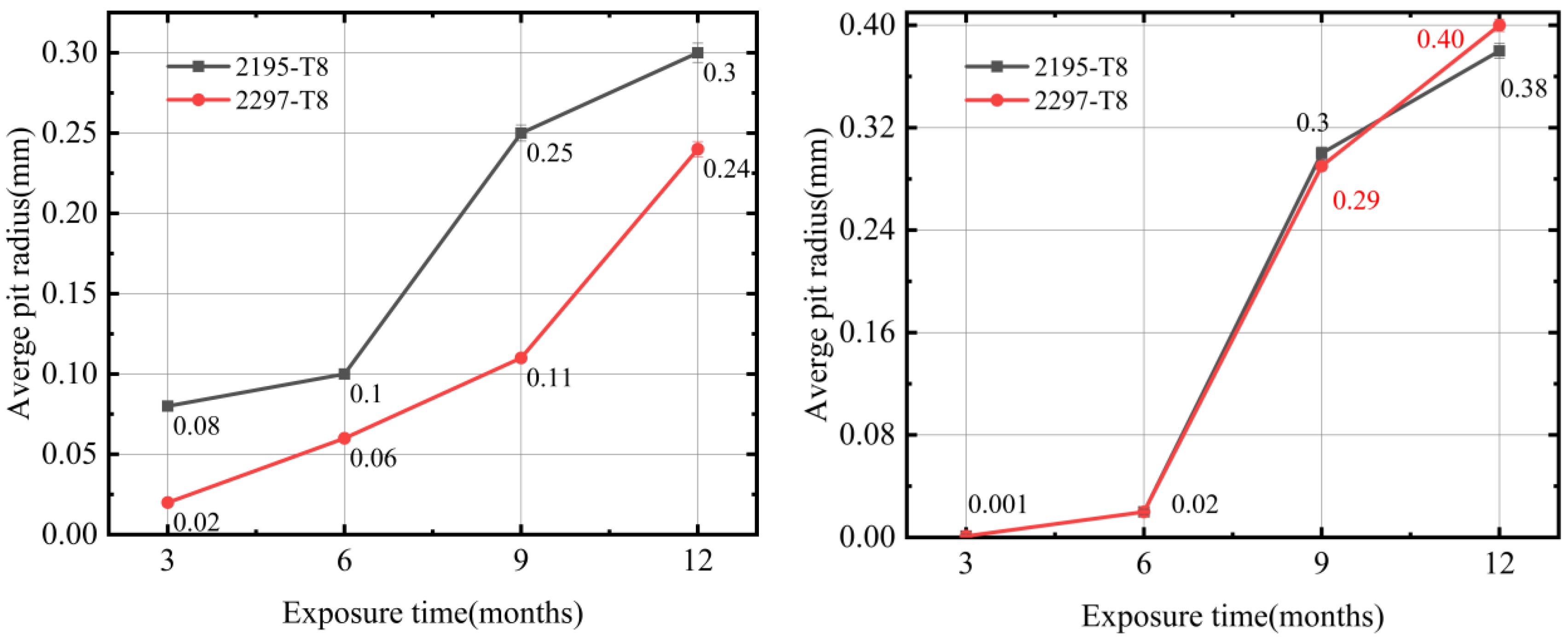
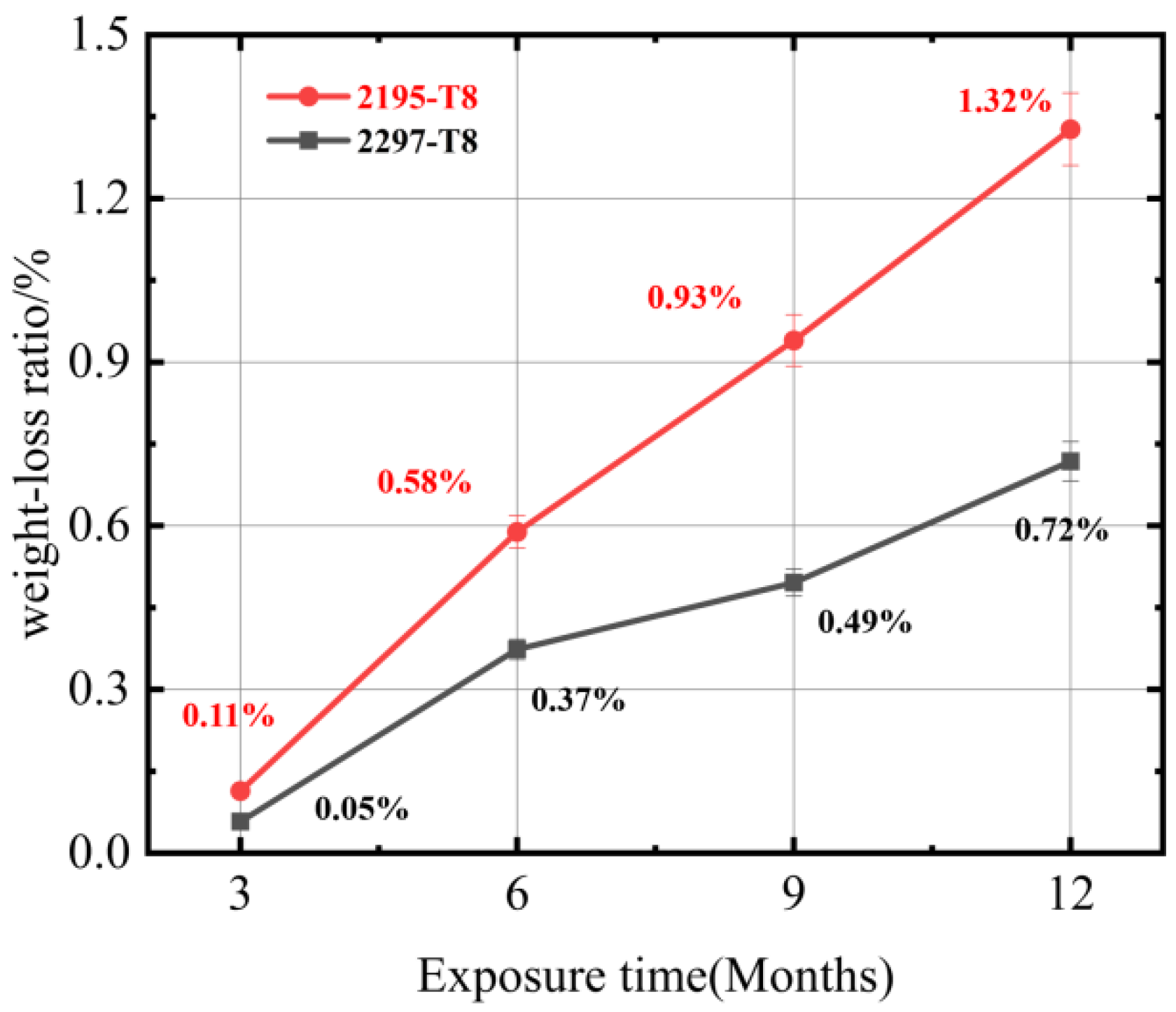

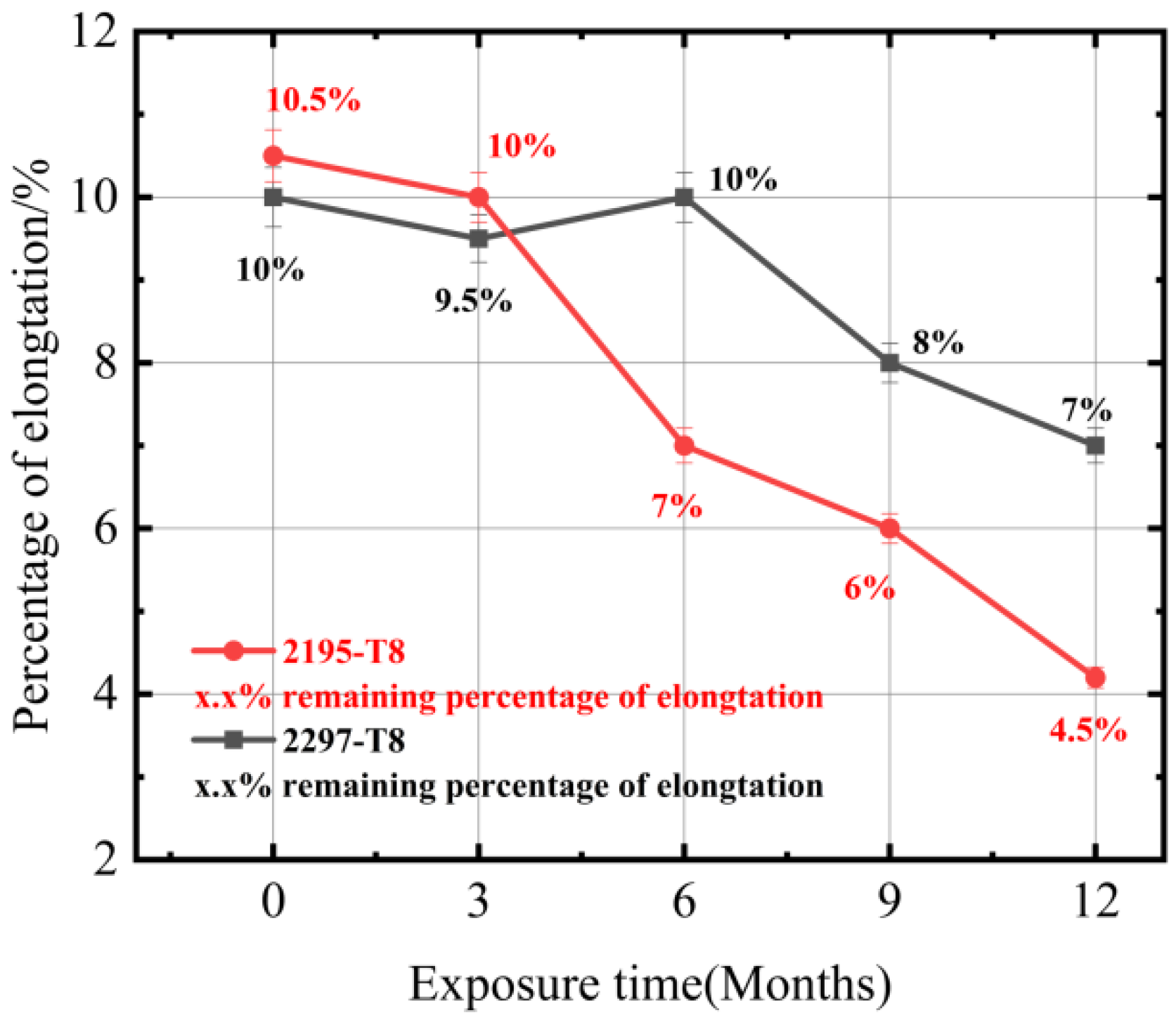
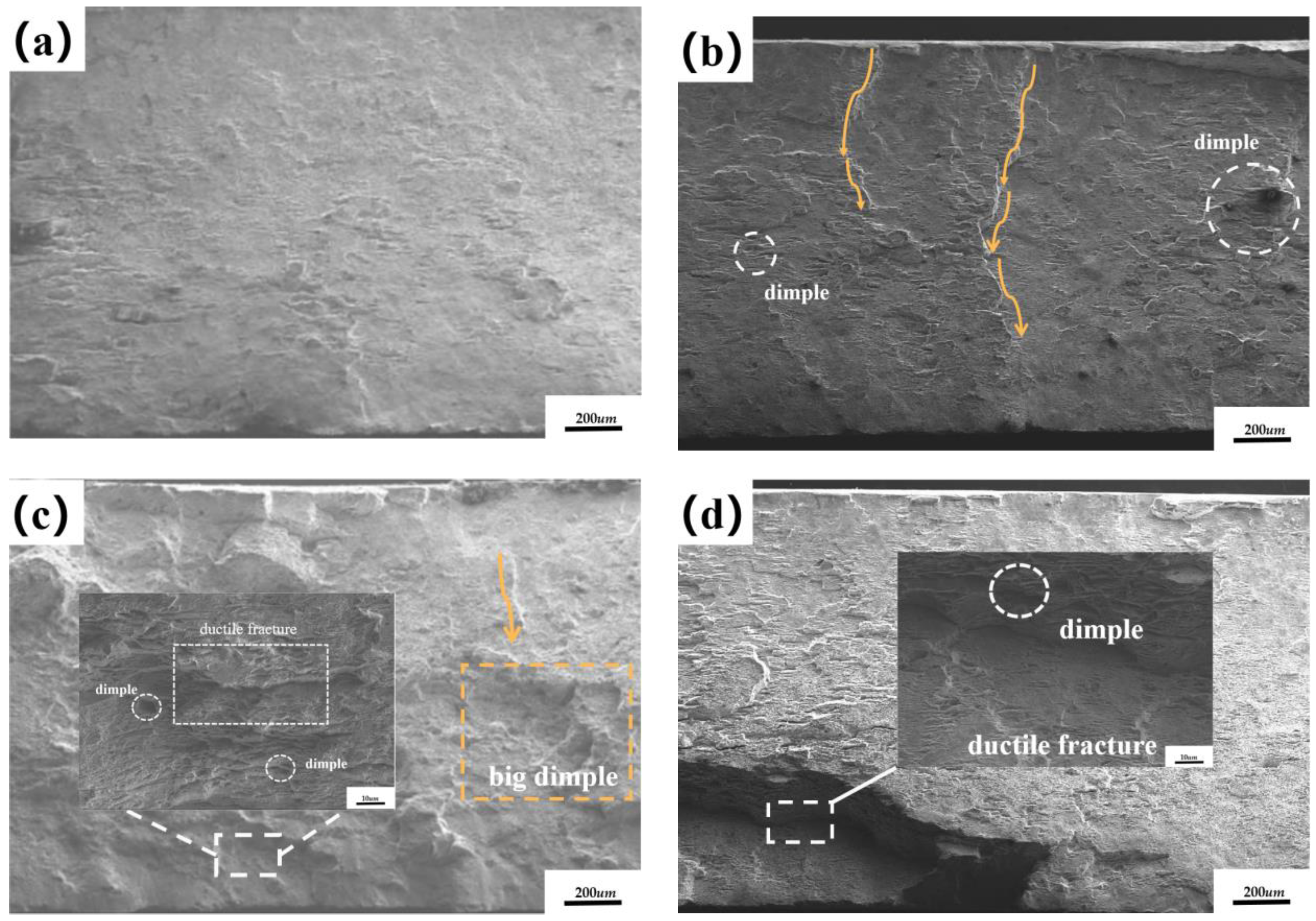

| Alloy | Al | Li | Cu | Ag | Fe | Mg | Zr | Mn |
|---|---|---|---|---|---|---|---|---|
| 2195-T8 (wt.%) | Bal | 1.09 | 3.98 | 0.42 | 0.14 | 0.44 | 0.11 | - |
| 2297-T8 (wt.%) | Bal | 1.36 | 2.86 | - | - | 0.01 | 0.11 | 0.31 |
| Month | Average Maximum Temperature (°C) | Average Minimum Temperature (°C) | Average Humidity (%) | Rainfall (mm) |
|---|---|---|---|---|
| January | 23 | 18 | 92 | 15 |
| February | 23 | 17 | 92 | 39 |
| March | 28 | 20 | 94 | 69 |
| April | 29 | 23 | 95 | 115 |
| May | 33 | 26 | 95 | 130 |
| June | 32 | 26 | 95 | 159 |
| July | 33 | 26 | 94 | 73 |
| August | 32 | 26 | 97 | 222 |
| September | 33 | 25 | 97 | 260 |
| October | 31 | 24 | 96 | 188 |
| November | 28 | 23 | 95 | 150 |
| December | 25 | 19 | 92 | 37 |
Publisher’s Note: MDPI stays neutral with regard to jurisdictional claims in published maps and institutional affiliations. |
© 2022 by the authors. Licensee MDPI, Basel, Switzerland. This article is an open access article distributed under the terms and conditions of the Creative Commons Attribution (CC BY) license (https://creativecommons.org/licenses/by/4.0/).
Share and Cite
Wu, H.; Wu, G.; Xiang, L.; Tao, J.; Zheng, Z.; Sun, J.; Li, W.; Huang, C.; Lan, X. Impact of Corrosion on the Degradation of the Mechanical Properties of 2195 and 2297 Al Alloys in the Marine Environment. Metals 2022, 12, 1371. https://doi.org/10.3390/met12081371
Wu H, Wu G, Xiang L, Tao J, Zheng Z, Sun J, Li W, Huang C, Lan X. Impact of Corrosion on the Degradation of the Mechanical Properties of 2195 and 2297 Al Alloys in the Marine Environment. Metals. 2022; 12(8):1371. https://doi.org/10.3390/met12081371
Chicago/Turabian StyleWu, Hulin, Guang Wu, Lin Xiang, Jianquan Tao, Zhongyan Zheng, Jipeng Sun, Wei Li, Chunyang Huang, and Xuke Lan. 2022. "Impact of Corrosion on the Degradation of the Mechanical Properties of 2195 and 2297 Al Alloys in the Marine Environment" Metals 12, no. 8: 1371. https://doi.org/10.3390/met12081371





